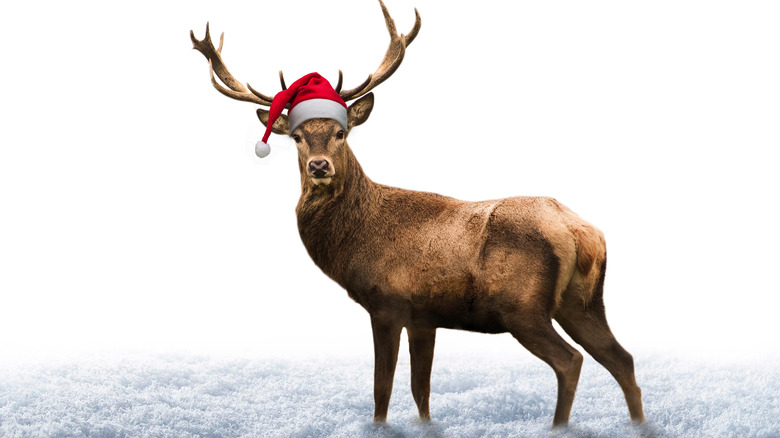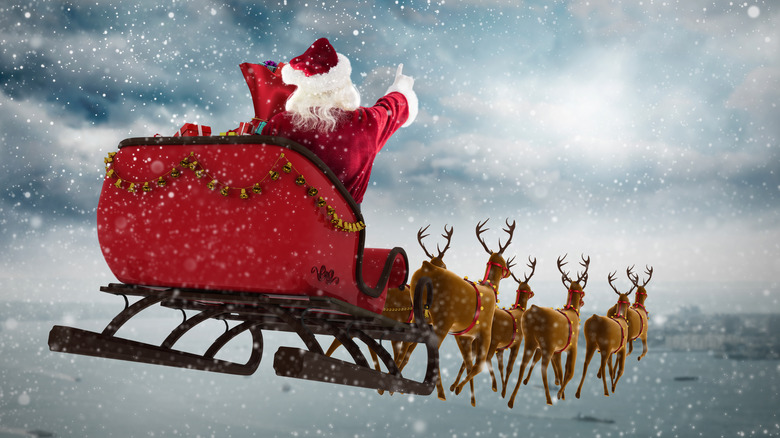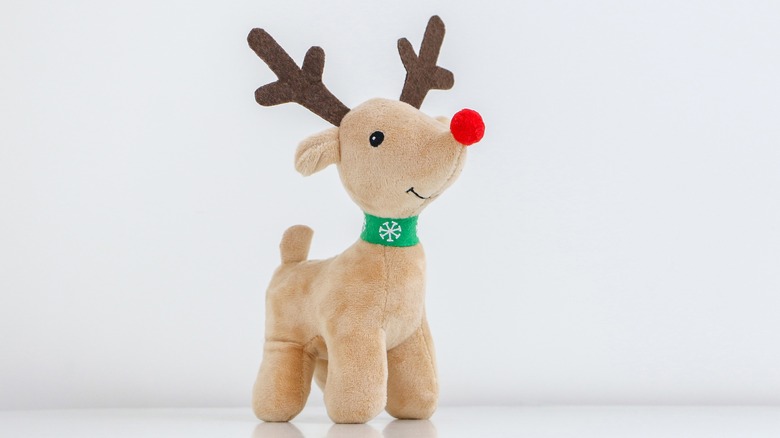You Never Knew This About Santa's Reindeer
Santa Claus, Old Saint Nicholas, or as Jack Skellington so affectionately called him in the 1993 movie "The Nightmare Before Christmas," "Sandy Claws." He's a Christmas icon in a bright red suit who goes by many names and is well known and loved by millions of well-behaved children awaiting whatever toys and trinkets he may deliver under their tree.
It all started with St. Nicholas, an actual person who served as a bishop in the early days of Christianity (per Britannica), who traveled all over, sharing his wealth and helping the poor, sick, and less fortunate, according to History. Over many years, the legend of St. Nicholas has evolved into well-meaning chaos, with Santa appearing everywhere, from Coca-Cola advertisements to shopping malls. One of the few pieces of Santa's holiday regimen that has remained the same, however, is his use of reindeer.
It's a tricky task to deliver gifts and goodies all around the globe in one night. So to do so, Santa Claus enlisted the help of special flying reindeer. The reindeer that pull his sleigh are now almost as famous as he is — most notably, Rudolph, the one with the shiny red nose to light Santa's way. The stories about the flying reindeer go back decades, and as it turns out, a lot of them aren't completely inaccurate. There's actually a lot about reindeer that most people don't know.
Reindeer ladies slay at sleigh pulling
Popular culture would lead us to believe that the reindeer in charge of Santa's sleigh are all male. However, male reindeer shed their antlers once reindeer mating season comes to a close in early December, according to Live Science. Female reindeer actually hang on to their thinner antlers all year. This means that if you spot a reindeer with antlers on December 24, you're looking at a female. So Santa is brought all around the world in one night by a crew of strong lady reindeer.
Another reason female reindeer might have an easier time hauling Santa and his bag of gifts all around the world on a cold December night, compared to their male counterparts, is that after mating season, male reindeer are left with as little as 5% body fat (per Live Science). The female reindeer have somewhere around 50% body fat — "seals on hooves," as one physiologist described them — to keep them warm and cozy for the journey, even in temperatures well into the negatives.
Rudolph's nose really was bright red
Nighttime can get extremely dark, and flying high up in the sky might be challenging for some, but the reindeer in charge of Santa's sleigh are well equipped to handle it. A reindeer's summer eye color is golden, whereas in the winter, they change into an icy shade of blue. The reason for this color swap is that the blue shade actually comes from a mirrored layer behind the reindeer's retina called the tapetum lucidum. This shift in hue allows light to reflect back onto the retina and helps the reindeer maintain excellent vision in darker conditions, according to National Geographic.
Furthermore, stories like that of the bright red nose in "Rudolph the Red-Nosed Reindeer" aren't as far from fact as they may seem. Reindeer noses contain high levels of red blood cells that emit large amounts of heat, according to a study published in The BMJ. So if a reindeer is spotted under a thermal camera, its nose would appear bright red. For years, reindeer have been hard at work leading Santa and his sleigh around the world, spreading holiday cheer, and these flying, furry ladies are well-equipped to continue the tradition for years to come.


